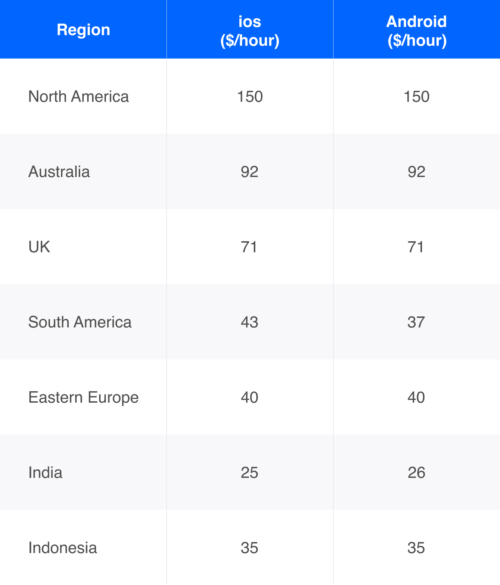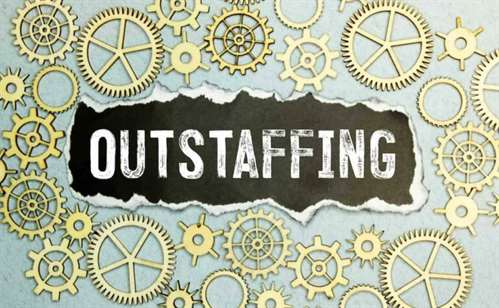And video game makers are using the cloud to deliver online games to millions of players around the world. Red Hat Advanced Cluster Management streamlines the application lifecycle management process, enabling organizations to deploy, manage, and update applications seamlessly across multiple clusters. With Red Hat Advanced Cluster Management, administrators can create application topologies, define deployment strategies, and automate the application rollout process.

To accommodate a large number of cloud users, cloud applications can be multitenant, meaning that any machine may serve more than one cloud-user organization. Hybrid cloud is a composition of a public cloud and a private environment, such as a private cloud or on-premises resources,[68][69] that remain distinct entities but are bound together, offering the benefits of multiple deployment models. It allows one to extend either the capacity or the capability of a cloud service, by aggregation, integration or customization with another cloud service.
Infrastructure as a Service (IaaS)
A hybrid cloud is a cloud environment that uses a mix of on-premises, private cloud, and public cloud services. This approach moves workloads between the public and private clouds as needed based on computing needs and cost changes. Businesses that opt for this solution have improved flexibility and data employment options. Cloud service providers can also use their hardware resources to create cloud platforms, which are online environments where users can develop code or run apps. Building a cloud platform requires more than just abstracting a computer’s capabilities from its hardware components—like when providing cloud infrastructure. Providing a cloud platform requires additional levels of development to incorporate technologies like containerization, orchestration, application programming interfaces (APIs), routing, security, management, and automation.
Clouds enable cloud computing, which is the act of running workloads within a cloud environment. Clouds are a type of PaaS, because hardware and an application software platform is provided by another party. By building private cloud architecture according to cloud native principles, an organization gives itself the flexibility to easily move workloads to public cloud or run them within a hybrid cloud (see below) environment whenever they’re ready. But a private cloud can also be hosted on an independent cloud provider’s infrastructure or built on rented infrastructure housed in an offsite data center. FaaS, or Function-as-a-Service, is often confused with serverless computing when, in fact, it’s a subset of serverless. FaaS allows developers to execute portions of application code (called functions) in response to specific events.
History of cloud computing
This enables workers to be productive no matter where they are, and enables businesses to provide a consistent user experience across several office or branch locations. Cloud migration is the process of relocating an organization’s data, applications, and workloads to a cloud infrastructure. In contrast to SaaS and PaaS (and even newer PaaS computing models such as containers and serverless), IaaS provides the users with the lowest-level control of computing resources in the cloud. The cloud allows you to trade fixed expenses (such as data centers and physical servers) for variable expenses, and only pay for IT as you consume it. Plus, the variable expenses are much lower than what you would pay to do it yourself because of the economies of scale.
Public cloud services are sold on demand, typically by the minute or hour, though long-term commitments are available for many services. Customers only pay for the central processing unit cycles, storage or bandwidth they consume. Leading public CSPs include AWS, Microsoft Azure, IBM and Google Cloud Platform (GCP), as well as IBM, Oracle and Tencent. The capability provided to the consumer is to deploy onto the cloud infrastructure consumer-created or acquired applications created using programming https://www.globalcloudteam.com/ languages, libraries, services, and tools supported by the provider. The consumer does not manage or control the underlying cloud infrastructure including network, servers, operating systems, or storage, but has control over the deployed applications and possibly configuration settings for the application-hosting environment. A private cloud is a proprietary network or a data center that supplies hosted services to a limited number of people, with certain access and permissions settings.
Private cloud
It also means that you can access these systems anywhere that you have access to the internet. For example, serverless, or event-driven, computing is a cloud service that executes specific functions, such as image processing and database updates. Traditional cloud deployments require users to establish a compute instance and load code into that instance. Additionally, cloud providers, such as IBM and VMware, are concentrating on meeting the needs of enterprise IT, in part by removing the barriers to public cloud adoption that caused IT decision-makers to shy away from fully embracing the public cloud previously. Today, however, organizations are more likely to migrate mission-critical workloads to public clouds. One of the reasons for this shift is that business executives who want to ensure that their companies can compete in the new world of digital transformation are demanding the public cloud.
- Sharing an OpenShift cluster for Red Hat Advanced Cluster Management with other solutions can make the restoration process more complex and costly, making it difficult to restore structures in the available time windows.
- PaaS provides software developers with on-demand platform—hardware, complete software stack, infrastructure, and even development tools—for running, developing, and managing applications without the cost, complexity, and inflexibility of maintaining that platform on-premises.
- Customers only pay for the central processing unit cycles, storage or bandwidth they consume.
- Think of a public cloud like renting an apartment, whereas a private cloud is renting a house of a similar size.
- The term “cloud services” refers to a wide range of services delivered on demand to companies and customers over the internet.
With serverless, customers pay only for the resources being used when the application is running—they never pay for idle capacity. IaaS was the most popular cloud computing model when it emerged in the early 2010s. While it remains the cloud model for many types of workloads, use of SaaS and PaaS is growing at a much faster rate. Threat actors who possess record-shattering attack methods have an extremely difficult time testing and understanding their effectiveness, due to the lack of infrastructure to absorb the attacks.
Why Google
IaaS (Infrastructure-as-a-Service), PaaS (Platform-as-a-Service) and SaaS (Software-as-a-Service) are the three most common models of cloud services, and it’s not uncommon for an organization to use all three. With the cloud, you can expand to new geographic regions and deploy globally in minutes. For example, AWS has infrastructure all over the world, so you can deploy your application in multiple physical locations with just a few clicks. Putting applications in closer proximity to end users reduces latency and improves their experience.

Companies can run mission-critical workloads or sensitive applications on the private cloud and use the public cloud to handle workload bursts or spikes in demand. The goal of a hybrid cloud is to create a unified, automated, scalable environment that takes advantage of all that a public cloud infrastructure can provide, while still maintaining control over mission-critical data. Hybrid cloud is just what it sounds like—a combination of public and private cloud environments. Specifically, and ideally, a hybrid cloud connects an organization’s private cloud services and public clouds into a single, flexible infrastructure for running the organization’s applications and workloads.
How does cloud computing work?
However, you should note that moving your workloads to the cloud will increase the amount of network bandwidth you use, so you may want to consider increasing that beforehand to ensure your connectivity isn’t disrupted. The cloud helps businesses mitigate these cost problems by eliminating costly IT infrastructure. With less infrastructure cloud solutions to look after, IT workers don’t have to spend hours patching servers, updating software and doing other tedious maintenance. Businesses can instead refocus the IT department’s precious attention span on higher-value tasks. The cloud refers to web-connected servers and software that users can access and use over the internet.
You can deploy technology services in a matter of minutes, and get from idea to implementation several orders of magnitude faster than before. This gives you the freedom to experiment, test new ideas to differentiate customer experiences, and transform your business. I am trying to download adobe cloud but everytime I click the user account control “yes” it pops up again. I have tried unistalling and renstalling it multiple times but nothing seems to work.















